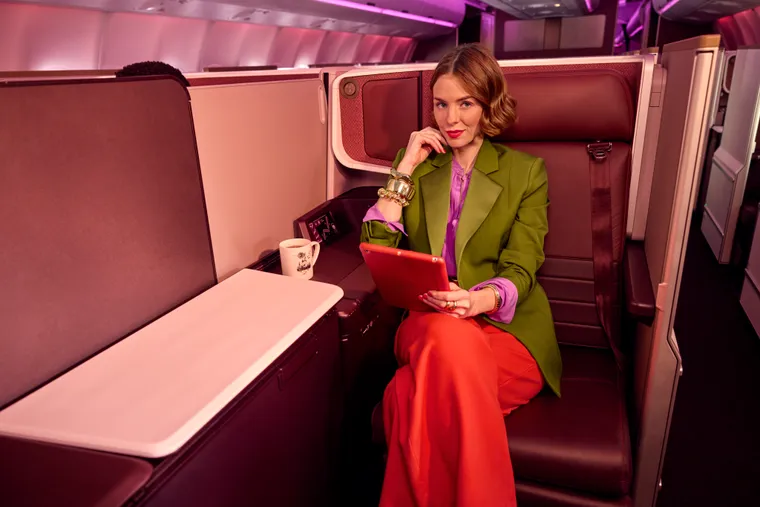With plans to boost business class seats on two aircraft types by more than a third, and to more than double premium economy on its 787-9 airplanes — plus tripling or quadrupling its Retreat Suite studio class business-plus product — Virgin Atlantic is going hard on the front of the airplane over the next five years.
Virgin is refitting its 787-9 fleet into what’s known as a high-J layout, J being one of the traditional ticketing codes for business class, plus adding a high-J A330neo subfleet comprising its forthcoming tranche of A330-900neos, with as many as eight Retreat Suite studios onboard each refitted plane.
The airline says it has “evolved from a challenger to a leading premium long-haul airline” and is seeing “high demand for premium cabins”, but this is an extraordinary amount of business and premium economy product to be putting into its markets over the next five years.
Virgin will continue to install the Thompson Aero Seating Vantage XL doored suite (which, prior to Thompson’s renaming this year, used to be called Vantage XL+) on its A330neos — and also expand it to the 787 fleet, which is a real vote of confidence in the Thompson product in an increasingly competitive landscape on on these airframes.
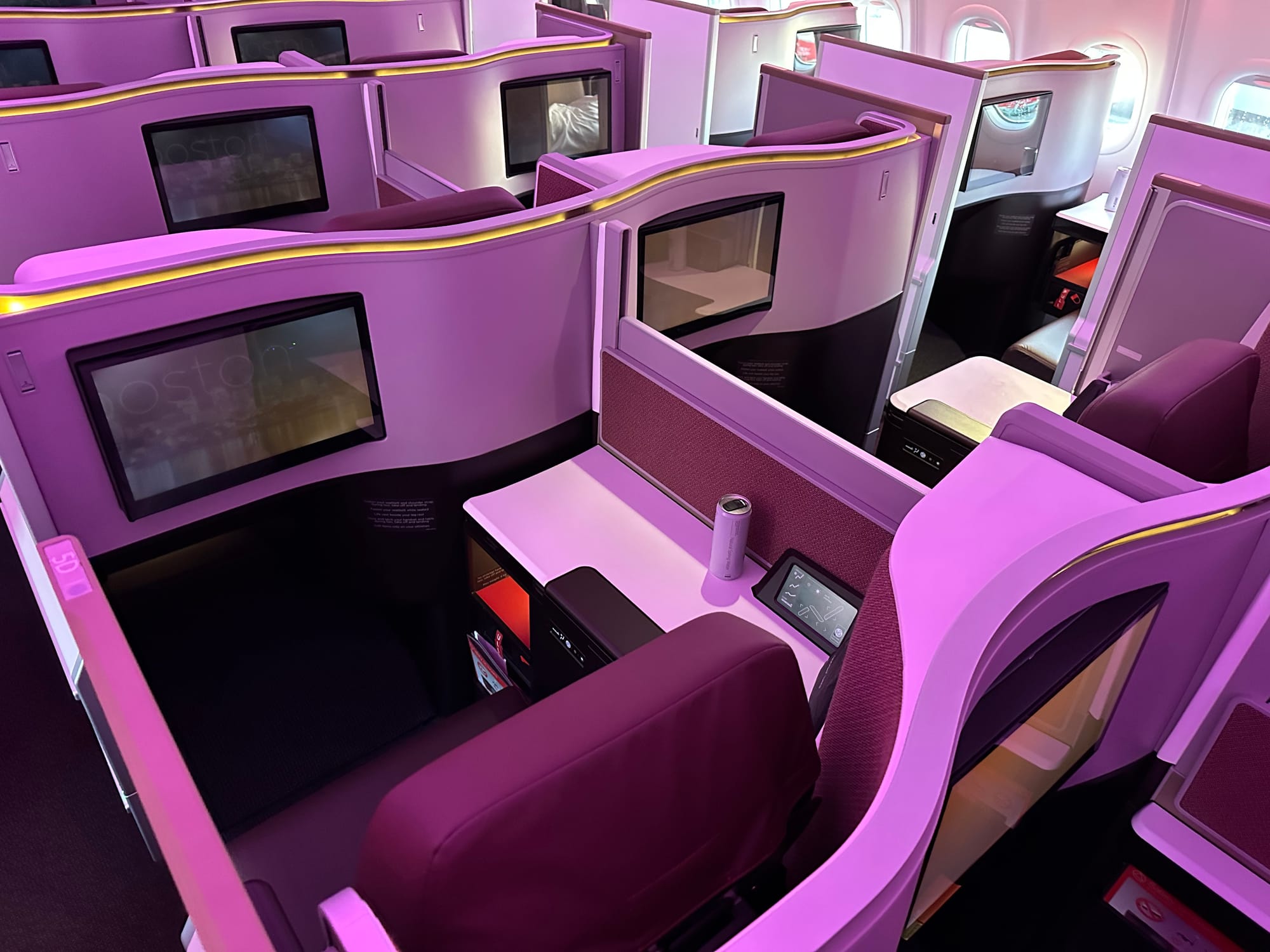
But what’s most remarkable about the set of changes is just how premium-heavy Virgin Atlantic is going on its future fleet configuration. In business, the retrofit will add more than a third more business seats on the 787 (compared with the existing 787) and high-J A330neo (compared with the current A330neo).
In premium economy, Virgin is more than doubling premium economy compared with the existing 787, from 25 to 56 seats. There’s also a massive role for the Retreat Suite — with 8 on the 787s and 6 on the high-J A330neos — marking a major push into the studio class market after dipping its toes with two Retreat Suites on the current A330neos.
I’ve flown it (full disclosure, as a guest of the airline a few years before we launched The Up Front), and in my professional opinion, the Retreat Suite is superior to British Airways’ first class hard products, especially those without doors, and given the relatively unimpressive soft product in BA first, Virgin is really nipping at its hometown rival’s heels here.
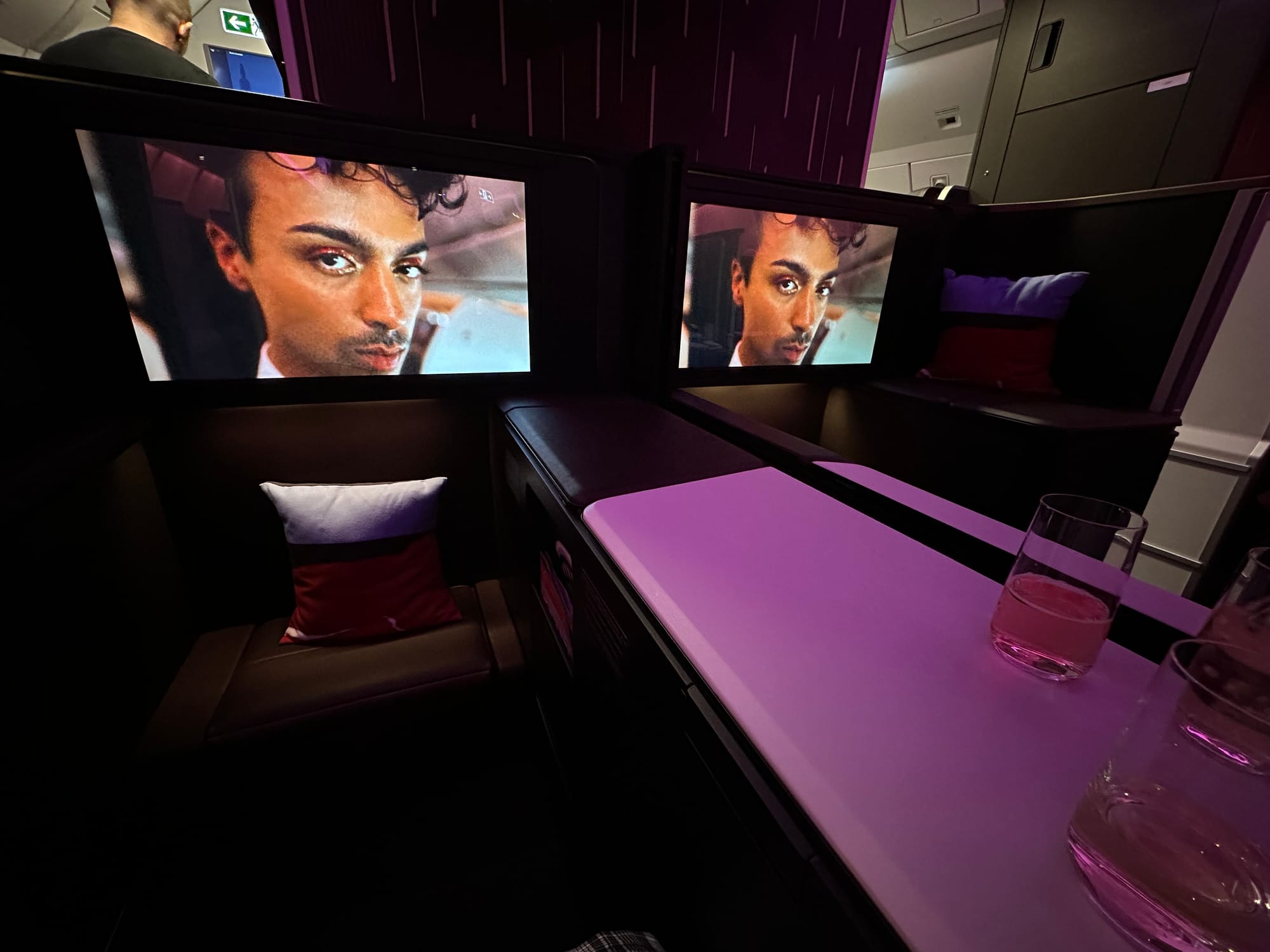
Add a couple of bottles of vintage bubbly to the drinks cart, put together a cocktail list, load a decent mattress pad, zhoozh up the table setting a little (limited edition colour Orville & Wilbur salt shakers, perhaps? A snazzy tablecloth?) and Virgin can be right at the front of the premium experience pack.
Virgin’s 787-9s turn into high-J premium aircraft between 2028 and 2030
Virgin’s 787 refit will install the Vantage XL seats and complete in a nose-to-tail refit, including substantial monument work, starting in 2028 and completed by 2030:
- 44 Upper Class Thompson Vantage XL with doors, up from 31 original Upper Class Suite without doors
- of which 8 Retreat Suite
- 56 Premium, up from 25
- 127 economy, down 34% from 192 — split between Delight, Classic and Light
This is a major change for the 787, which turns from a relatively low-premium aircraft into one of the most premium-heavy layouts in the sky. As a reference point, Shanghai Airlines’ version of the same Vantage XL fits 30 business class seats ahead of doors 2 on the 787-9, so presumably 3-4 rows of Upper Class will be in the second cabin.
Exact layouts will, of course, depend on the configuration of the doors 2 area, where Virgin currently has quite a large galley complex and four lavatories, two for Upper Class and two for premium economy. We also don’t know exactly how many 787s Virgin will keep: the plan was 14 but it seems there is some flexibility here.

What we do know is that the 787’s bar is disappearing in the refit. On the current layout, this is a small perching style bar in a diagonal layout in the centre section of the doors 2 area, at the rear of the single business cabin.
Virgin will install eight Retreat Suite studio class front-row business-plus seats on the 787, presumably at the front of each of the two Upper Class cabins. Given that Virgin’s first-generation A330neo has only two of these — in the centre section — this is quite the boost. Shanghai Airlines has four of these in the front row of its 787, so it seems clear that there is no major problem engineering them into the 787 fuselage.
The airline is suggesting that the Retreat Suites are taking the place of the bar as the social space in the 787, although this doesn’t necessarily pass the sniff test.
It’s also rather reminiscent of the protestations from Virgin staffers at the launch of the A350-1000 in 2019, where the Safran Cirrus NG herringbone’s lack of suite doors was fine because Virgin was, and I quote a good dozen people in impressive PR lockstep here, “a social airline”.

Amazingly, these arguments disappeared entirely by the time Virgin launched the doored Thompson Vantage XL suites on its A330-900neo in 2022.
On the seat side of things, Virgin’s version of the doored Vantage XL from the A330neo to the slightly wider 787 should in theory be a relatively simple exercise, not least since the doored version has been flying on Dreamliners with China Eastern subsidiary Shanghai Airlines since 2018.
There will, of course, be a need to consider any changes made in the seven years since the seat débuted on the Dreamliner. Virgin’s part-owner Delta Air Lines did a substantial amount of work customising the doored Vantage XL product for its own A330-900neo, and Virgin’s own has custom CMF.
Moreover, there’s the context of the FAA’s increasing scrutiny of doored mini-suites that has delayed many aircraft, Dreamliners in particular, to the extent that American Airlines’ new 787-9’s Elevate Ascent suite doors are locked open and cannot be closed.
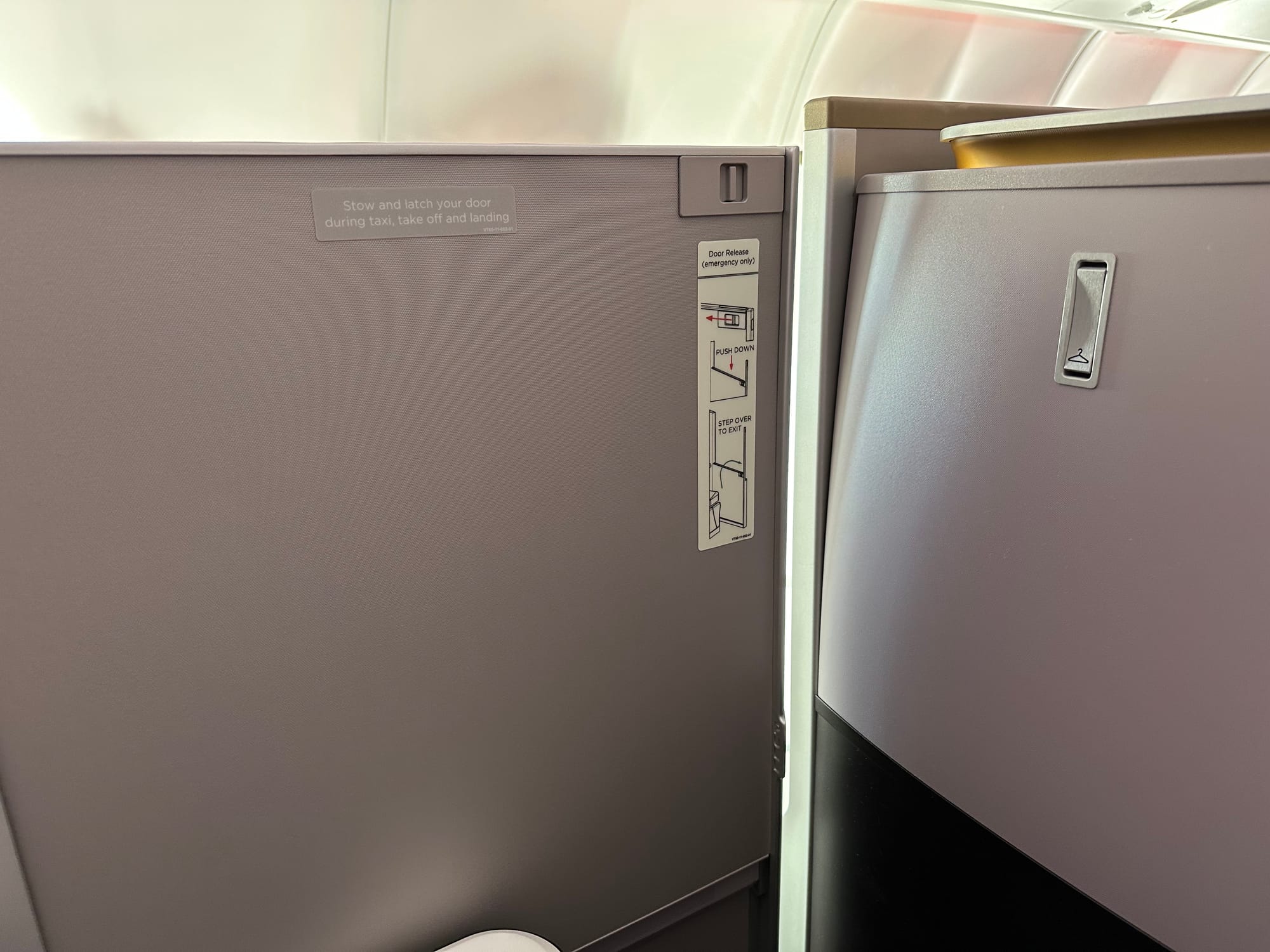
Overall, though, the new seats are a massive improvement on Virgin’s current 787s, and a notable move towards consistency of passenger experience.
A high-J A330neo subfleet starts arriving next year, with six Retreat Suites
But two years before the 787s arrive, Virgin’s second tranche of A330-900neos will start joining the fleet, and these will be in a high-business configuration remarkably similar to the Dreamliners in proportion — and much more premium than the current layout of the A330neo.
Starting in Q3 2026, the new A330neos will look like:
- 48 Upper Class Thompson Vantage XL with doors, up from 32 of the same product on what will be the low-J A330neos
- of which 6 Retreat Suite, up from 2
- 56 Premium, up from 46
- 128 economy, down 30% from 184
That seems like Virgin will extend the Vantage XL suites behind doors 2 quite some distance, but what most fascinating here is that Virgin plans to have six Retreat Suites on board.
Virgin says, “following its popular introduction in 2022, four more Retreat Suites will be added into the A330neo Upper Class cabin. With a total of six per aircraft, the Retreat Suite is the airline’s most spacious suite yet.”
At present, there are just two — 1D and 1G, with 1A and 1K at the point at which the fuselage begins to narrow not being Retreat Suites.
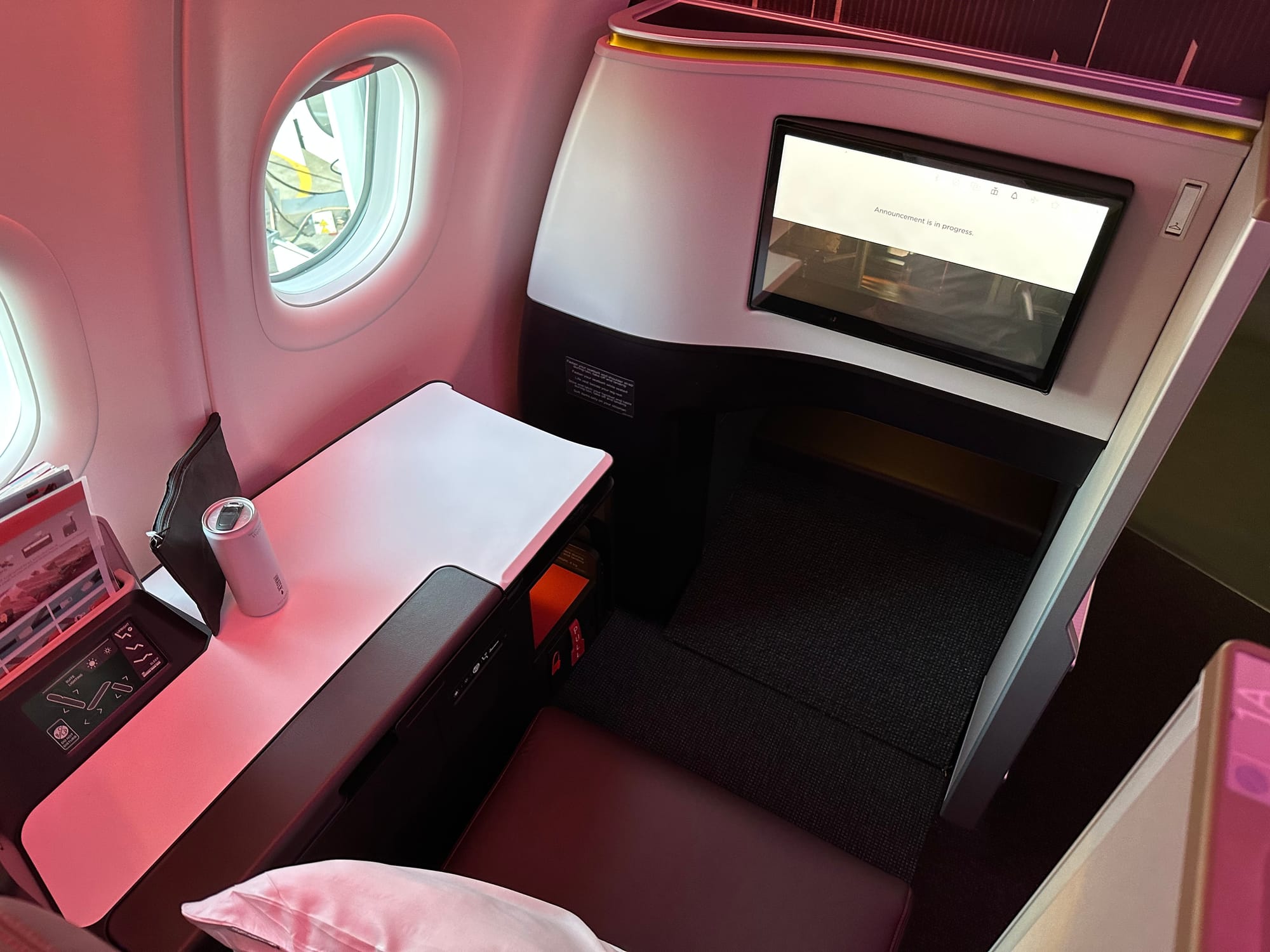
Virgin didn’t say where these six will be, and their press team declined to comment about precisely where the four more Retreat Suites will be positioned when I got in touch, but it strikes me there are two possibilities here.
The first possibility is that there will be a pair of Retreat Suites in the centre section behind doors 2 and then individual solo Retreat Suites on the side, which will be entirely new: 1A and 1K are not branded as Retreat Suites, and if they were going to be, it seems like there would be eight Retreat Suites on this aircraft, not six.
The second possibility is that Virgin is doing something entirely new at the rear end of the front cabin.
Edit, 11 July, to confirm details about The Loft: Virgin Atlantic confirms to The Up Front that “there won’t be a Loft on the high-J A330neos going forward, but the Loft will be retained on the aircraft we currently have in our fleet.”
Less likely is that Virgin shuffles around the front end of Upper Class to enable the same Retreat Suite-sized studio class product that Shanghai Airlines has on its 787-9s and that, presumably, Virgin’s own 787-9s will also have.

It’ll be interesting to observe what Virgin does around the doors 2 and doors 3 spaces in particular. Doors 2 currently has the Loft sofa space, three lavatories (two business, one premium economy) and a galley, and presumably the premium economy elements will move back to doors 3 with the new configuration.
Overall, consistency with a heavy mix of a strong premium product is a bold move
Fleetwide, this is an excellent move both in terms of Virgin updating its business class product and in terms of improved Upper Class consistency — which has been a criticism by passengers, especially with Virgin’s tendency to swap aircraft around relatively frequently to match demand.
Virgin’s fleet will drop from three Upper Class products to two, with the current fleet comprising:
- the Safran Cirrus NG herringbone in hybrid configuration (window seats face the window, centre seats face the aisle) on the A350-1000
- the Thompson Vantage XL stagger (with doors) on the A330-900neo
- the second-generation 1-1-1 version of the Virgin Reynard/threesixty/Contour/Zodiac Upper Class Suite on the 787-9 and A330-300 (with the latter exiting the fleet)
As you might imagine from that list of manufacturers of the 787 seat, there’s quite the history there, including the now-infamous Virgin v Contour lawsuit. Virgin sued its Upper Class Suite seat manufacturing partner Contour, plus Contour’s customers Delta, Air Canada and Jet Airways, for alleged patent infringement in the Solar Eclipse seats and lost. It then turned around and sold its seat design unit threesixty (formerly Reynard) to Zodiac (which had by then purchased Contour).
It’s a real saga, but the real moral of the story for passengers today in 2025 is that Virgin’s current 787 seat (its original Upper Class Suite) is out of date. The 787 Upper Class Suite is a smaller, tighter version of the Virgin product launched in 2003, and customers, even those like me who really rated the original version of the product on the 747 (and Air NZ’s 777), just don’t like it.
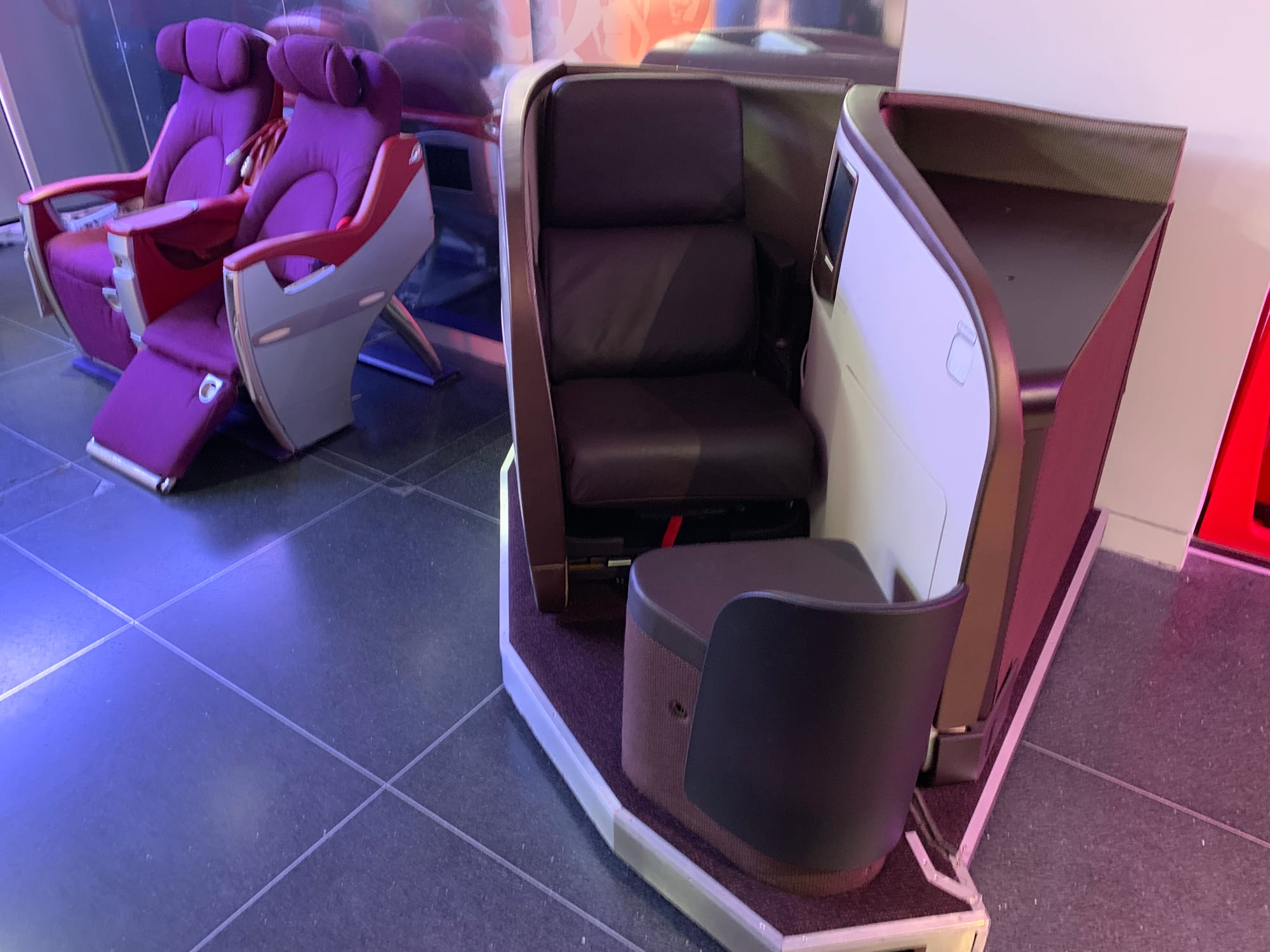
Indeed, even when Virgin’s Dreamliners were introduced back in 2014, it was a fallback compromise after the failure of the Project Yuri Upper Class Dream Suite product Virgin was originally intending to put on the aircraft.
Back in 2012, when Virgin first launched Project Yuri on its A330-300, I remember chatting most of the short red-eye night of the return inaugural back to London with Virgin’s then-CEO Steve Ridgway, talking about their plans to roll out the Dream Suite from the A330-300 fleet to the forthcoming 787s. This obviously didn’t happen, and the 787s got the same compromised version of the Upper Class Suite as Air New Zealand’s 787s.

It’s quite the shame that these original Upper Class Suite seats — which, let’s not forget, introduced the very concept of direct aisle access for every passenger in business class — will be remembered by most in their compromised 787 (and A330) for, where the angle required to achieve even a slightly decent density because of the fuselage width of these aircraft means only a 1-1-1 layout and narrow seats. After almost thirty years in the sky, that feels a bit sad.
Virgin also adds several tech improvements, including free Starlink wifi, plus JFK and LHR Clubhouse refurbs
In the relatively short term, Virgin will also be transitioning from Viasat and Panasonic inflight connectivity to Starlink on all aircraft except its A330-300s, starting in Q3 2026 through the end of 2027. The airline plans to make access free for its Flying Club frequent flyers in all cabins.
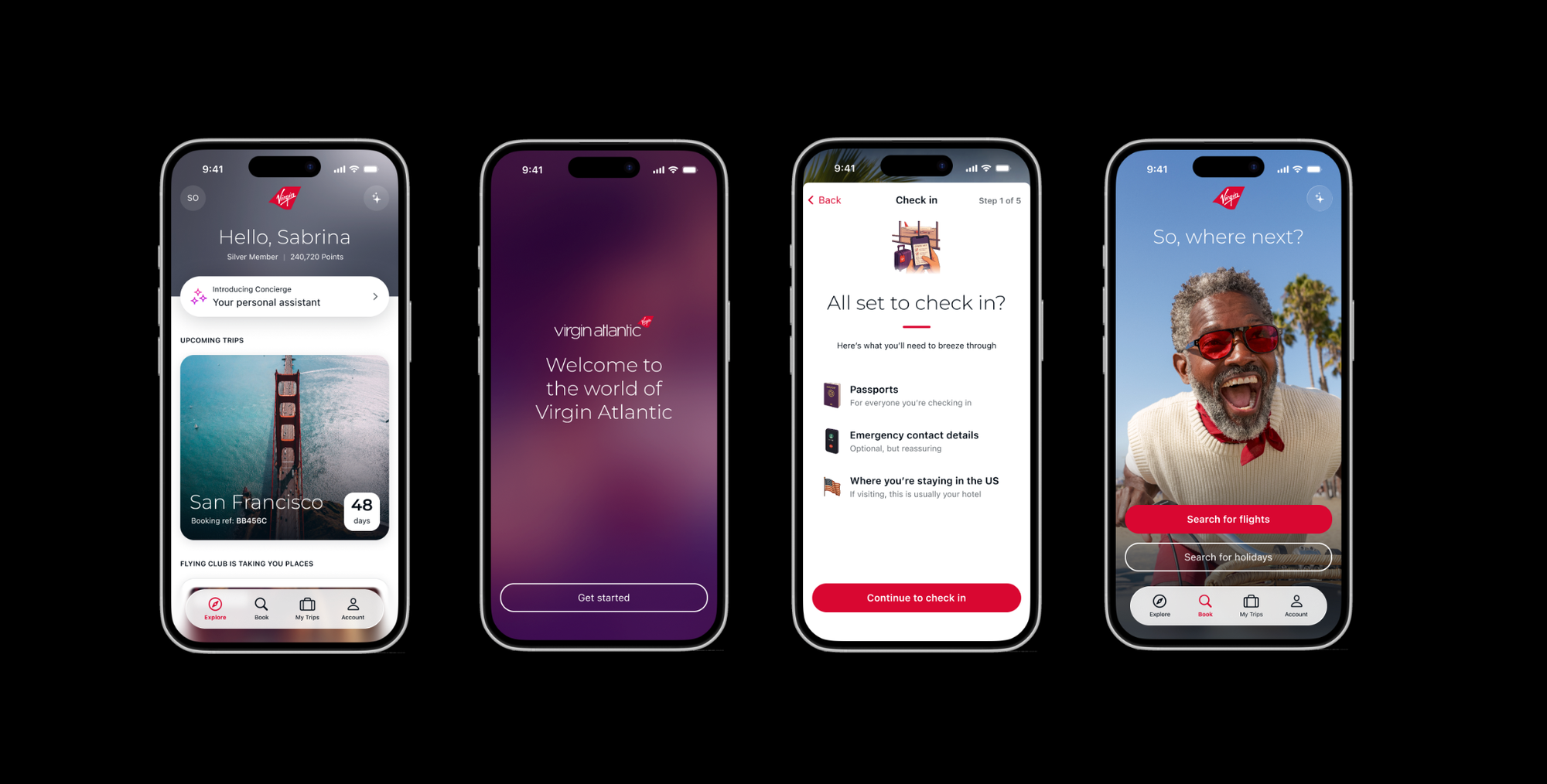
There are also app upgrades: a new one from December this year, plus a concierge in conjunction with OpenAI and Tomoro.ai, which will include voice mode. It’ll be interesting to see whether Virgin can stop whatever version of ChatGPT it uses hallucinating garbage misinformation to passengers, though.
I asked ChatGPT which Virgin Atlantic planes had the best business class seats. It told me that the A350 Upper Class was the best, which it is not, said that on the A350 there are “privacy doors on newer aircraft”, which the A350 does not have, and discussed the Retreat Suite (“on select A350s”), which the A350 also does not have.
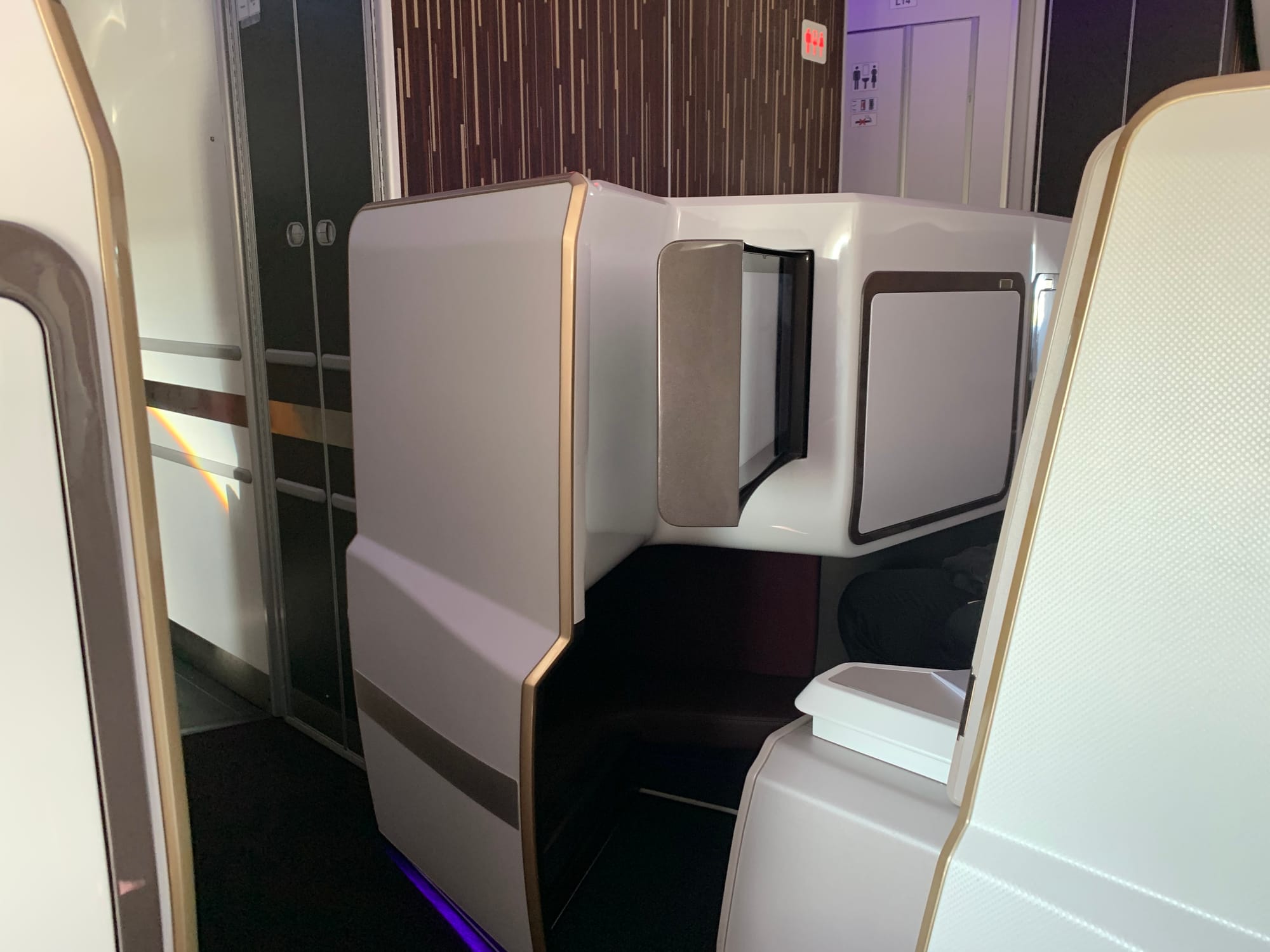
I then asked it what the best seats were in Virgin Atlantic’s A350 Upper Class. It ignored the fact that Virgin has two A350-1000 configurations: the low-J with Upper Class in rows 1-4 and the high-J one with Upper Class in rows 1-11.
ChatGPT hallucinated fake information extensively here even beyond that, including that:
- row 6 was the last row of Upper Class, which it is not on either layout
- there was “a sliding door in each suite”, yet these seats are not suites and do not have doors
- lavatories were by seats 7D/G, which they are not on either layout
Fundamentally, this highlights one of the big gen AI problems for airlines: the information might look authoritative, but it’s authoritatively wrong, as jetBlue president Marty St George highlighted on Bluesky this week, where an unnamed AI platform hallucinated flight routings that don’t exist.
Moving on, and in addition to the aircraft refits, Virgin is also going to be upgrading its Clubhouse lounges at London Heathrow and New York JFK. Namedropping its recent LAX Clubhouse — so look there for inspiration — the airline plans to update its “flagship spaces” at its two biggest and most important airports.
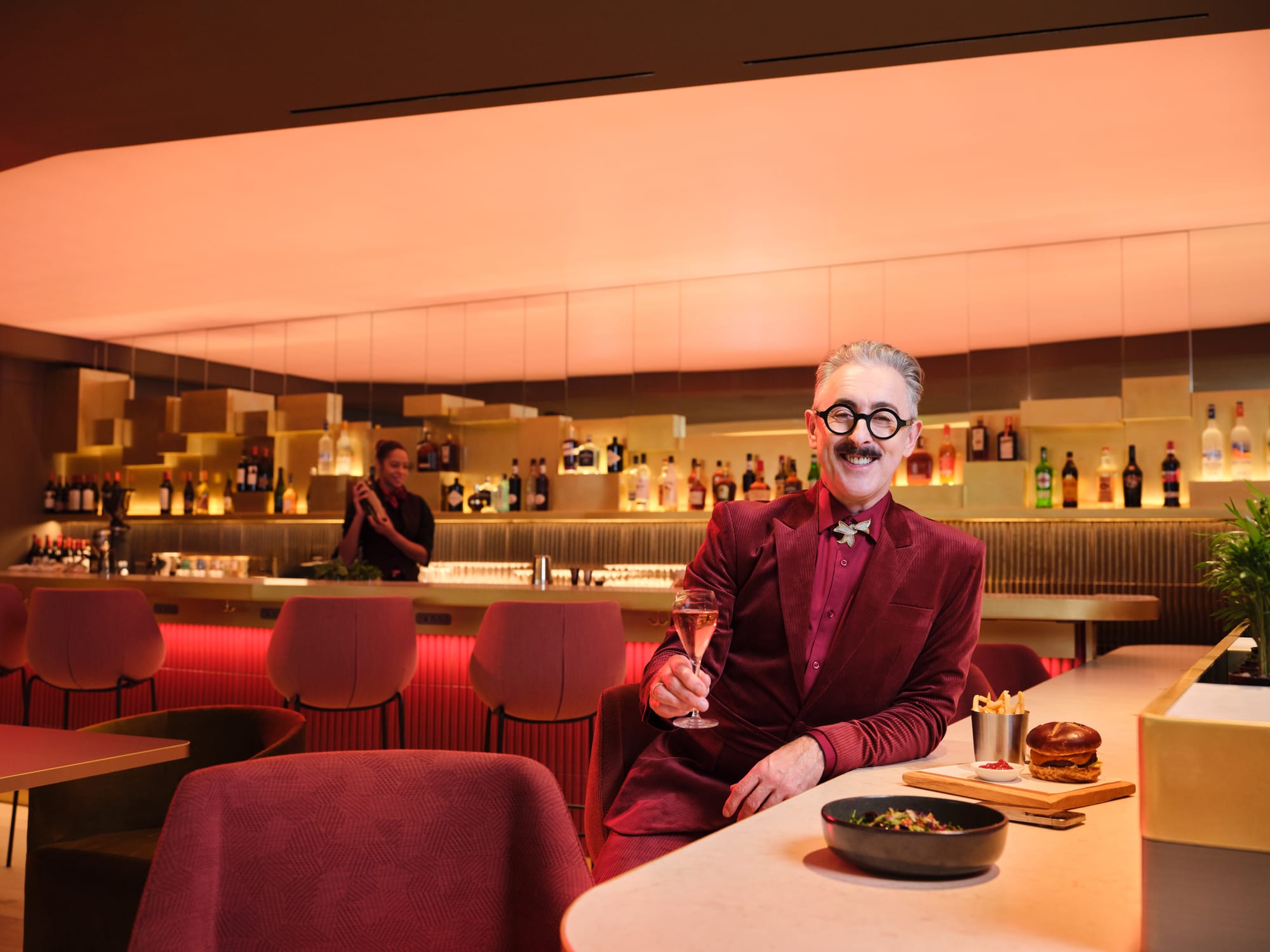
This does rather suggest that Virgin isn’t moving out of Heathrow’s creaking and elderly Terminal 3 any time soon. The terminal dates back to 1961, before London Airport was even called Heathrow, and is so old that it was the first place in the entire UK to have a moving walkway.
While Virgin’s spaces are impressive, including the Upper Class Wing premium drop-off zone that outpaces many airlines’ first class offerings, and the excellent Clubhouse that is still one of the world’s best business class lounges even before the upcoming refurbishments, T3 just needs replacement. And even during the five years that Virgin is planning for its fleet changes, it’s unlikely that the wider Heathrow questions will be resolved.
Editor’s note: this piece was updated on 11 July with new information from Virgin Atlantic, confirming our speculation that its Loft social space on the existing A330neos will not be installed on the future high-J layouts.
Read more from The Up Front, with our detailed analysis of the business class seat landscape, front-row business-plus studio class, and much more:
- Better than business, and even some first class: the new arms race for studio class super-suites
- The world’s first look at ANA’s new 787-9 business class, the sofa-style The Room FX from Safran Seats
- How Collins Aerospace plans to solve the thorny problems of seat production: modularity in both seats and in factories
- Air New Zealand is launching the Safran Visa seat on its 787-9, but is its no-doors Business Premier already eclipsed?
- Excellence in aesthetics: United’s new Elevate Ascent is a CMF masterclass, and a fascinating hybrid layout to boot

